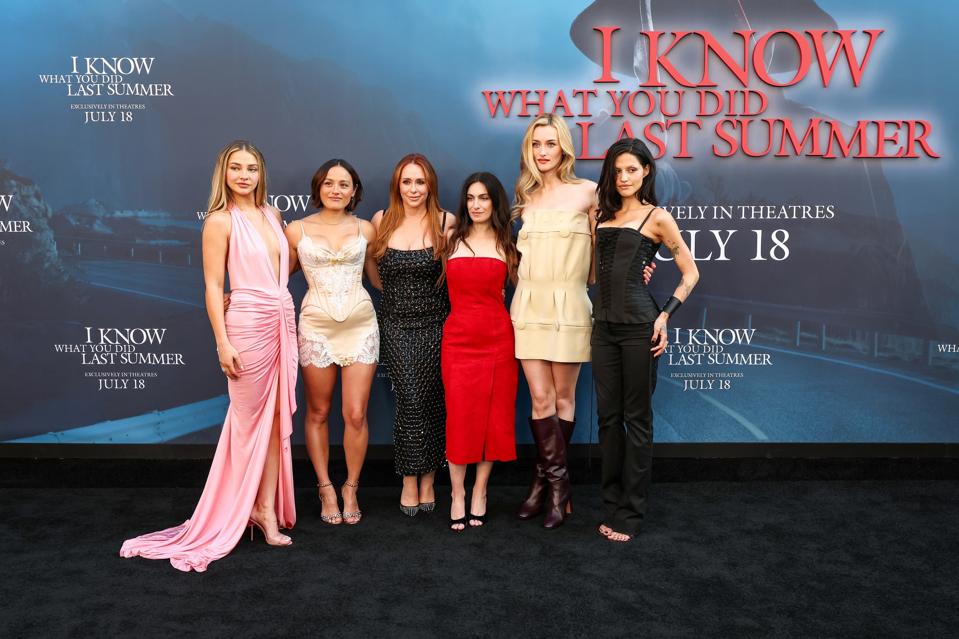Last week, Jennifer Love Hewitt stepped onto the red carpet for the Los Angeles premiere of I Know What You Did Last Summer. When photos of Hewitt in a black spaghetti-strap dress hit the internet, a wave of ageist and body-shaming commentary quickly ensued online. The comments specifically compared her current body to how audiences remember her looking when she played the character of Julie James in the original I Know What You Did Last Summer franchise. At the time she played Julie, Hewitt was just 18 years old. Even then, she was already no stranger to having her body scrutinized. She recalls experiences like grown men talking to her about her breasts openly on a talk show when she was 16.
Has Hewitt gone full circle from being hypersexualized at 18 to being slammed for aging at 46, or are body-shaming and hypersexualization – though seemingly opposite – just two sides of the same coin?
Herein lies the paradox.
Our culture teaches women and girls that being sexualized is a positive outcome and body-shaming is a negative one. We’d be better served, however, by understanding that at the core, both of these are fueled by and lead to dehumanization.
Dr. Caroline Heldman, sociologist and author of The Sexy Lie, pointed out in a 2013 TEDx talk “Hypersexualization and body-shaming are both mechanisms of control. One demands a woman to be ‘sexy enough,’ the other punishes her for being ‘too much.’ Either way, she loses.” Sexual objectification reinforces harmful stereotypes about women and contributes to a culture of gender inequality. It can also lead to low self-esteem and increase tolerance for sexist attitudes and violence against women. Body-shaming and hypersexualization often work together to reinforce harmful norms. They may appear opposite — one criticizes the body, the other puts it on display — but both diminish a person’s selfhood or personhood to how they look.
It’s 2025, and we’re still living in a culture that believes that inappropriate sexualization and criticism are the justifiable price that women should pay if they are visible to the public in any way. It’s important to recognize that beliefs like these simply don’t have any place in our society. Furthermore, they don’t just harm the mental health of celebrities like Hewitt, they teach all women and girls that they can expect to be evaluated harshly if they step into the spotlight.
Hewitt has spoken candidly about the lasting impact of feeling so much scrutiny. She has shared that she hadn’t ever felt truly insecure until the paparazzi took photographs of her during a vacation to Hawaii in 2007. Those images were published under the harsh headline, “Stop Calling Me Fat!” She recalled, “I don’t think I was ever really insecure until that cover… I don’t know that I’ve ever recovered from it… I really wanted to be a good actor, and I was trying to outact the conversation around my body.”
Hewitt’s professional credits go far beyond the iconic horror franchise that helped define her career in the late 1990s. The actress is also a producer (Time of Your Life, Audrey Hepburn Story, Ghost Whisperer, The Client List, The Lost Valentine), director (Ghost Whisperer, The Client List), author (The Day I Shot Cupid, published in 2010 and Inheriting Magic, published in 2024), songwriter (BareNaked), and comic creator (Music Box). Fixating on her appearance is a product of sexist expectations that tell us again and again that women’s bodies matter more than anything they accomplish.
The criticism that Hewitt experienced following her red carpet moment also inspired a wave of support and meaningful discussion on social media, with many commentors rallying around the power of body respect. Hewitt’s own willingness to speak out against ageism and body obsession also offers a powerful counter-narrative as she continues her journey in Hollywood.

